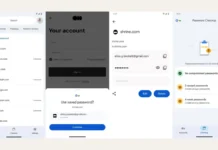Files by Google and Nearby Share are Android’s best features. You can now use these features to send folders directly from an Android phone to any other Android device, Chromebook, or Windows computer. Previously, users were required to compress the folder into a zip file before sending, but the new option eliminates these steps. Users can easily send entire folders through a simple process.
The Files by Google is a vital application every Android smartphone should have. This file manager app has several features built-in, such as junk cleaner, offline file sharing, a secure folder option to keep personal files private, and an option to keep your important documents securely in one place.
Nearby Share is a built-in feature of Android that lets you share photos, videos, contacts, links, etc., wirelessly with other Android phones and Chromebook. Now, Google expanded the Nearby Share feature for Windows, allowing you to transfer files between your Android device and Windows PC quickly and wirelessly.
ALSO READ: How to Transfer Files Between Windows and Android Using Google’s Nearby Share App
Here is how to use Files by Google and Nearby Share to send entire folders to any Android device, Chromebook, or Windows computer. And you can send folders offline too.
How to Send Entire Folders From Android With Nearby Share?
1. First, open the Files by Google app on your Android phone.
2. Tap the Browse button and go to the folder you want to share with another device.
3. Long tap the folder and tap on the Nearby Share button shown at the top right.
4. Your device will search for nearby devices and list them.
5. Tap the device’s name. The chosen folder will send instantly to the selected device.
Sending folders from an Android phone using Nearby Share is that much easy. However, the feature only works with the Files by Google app. Currently, it will not work with other file manager apps. However, you can compress a folder into a zip file, send it to any other device via Nearby Share, and then decompress it. The new feature in Files by Google eliminates these extra steps.
More Resources:
- Transfer Apps via Play Store’s Nearby Share Option (Without Mobile Data)
- How to Use Microsoft Edge Drop Feature to Transfer Files Between Devices
- How to Transfer Files Between Android, iPhone and Desktop Without Installing Any App
- How to Open Multiple File Explorer Windows From Taskbar in Windows 11


![[U]Coolmuster Android SMS + Contacts Recovery App (Giveaway) Coolmuster Android SMS + Contacts Recovery](https://techtrickz.com/wp-content/uploads/2025/05/Coolmuster-Android-SMS-Contacts-Recovery-218x150.webp)
